Darwen
Darwen is a small market town about twenty minutes from Preston, just south of Blackburn, and on the A666 - the Trunk Road of the Beast. It is another Lancashire that made its fortune with the textile industry, and suffered when that went into terminal decline. However, it seems now to be thriving and has at least some manufacturing sites still there.
I used to visit Darwen on a weekly basis when my daughter was football training here with Blackburn Rovers, and I got to know some bits very well. The nearby Sainsbury's in particular.
Darwen's most prominent feature is the Jubilee Tower that looks over the town, and I blogged about that a couple of years ago. Here is the view from there looking down at Darwen.
The chimney just right of centre is India Mill, and as you approach Darwen from north (and the M65), the chimney is directly ahead of you; it very much dominates the skyline. So we will start there, on the south side of the town, and work our way north.
The chimney was designed to be attractive, more specifically to resemble an Italian bell tower. It was the tallest and most expensive in the country when built in 1867. It is unusual in being straight, rather than widening towards the bottom.
The mill has been repurposed, and part of it is used by an aerospace company. It has been restored very well. There are a couple of bits of equipment that have been turned into art. This example, with the chimney in the background, is a stationary steam engine.
This one is... less obvious. At first glance it seems to be a water wheel, but in fact each trough would hold ink of a different colour - it is for making wall paper.
Heading north, we turn right off the A666, and cross a small river. I think this is Alum House Brook, which begs the question: Where is the River Darwen? I have to admit, I am not sure. The Alum House Brook seems to run through the valley the town sits in, and on to Blackburn, disappearing under the Leeds Liverpool Canal just north of Ewood Park, and becoming the River Darwen when it emerges.
Whatever it is called, this takes us to the Sainsbury's mentioned earlier, the back of which seems to be entangled with the back on the Crown pub.
I usually do not bother with modern buildings, but the Darwen Aldridge Community Academy is an exception, as it is a well-designed building. This is also where my daughter used to do football training.
Heading diagonally back to the A666 is Bridge Street, presumably because the river runs under it, but it is culverted and there is no sign of a bridge now. There is this rather fine building; a sports and social club.
Jumping back to the A666, and on the left is the Belgrave Meeting House. At first glance it appears to be falling down, with only one side of the tower still extant, but this appears to be how it was built in 1847.
It does seem to be closed as a church, but may now be apartments.
Just below the church, and on the main road, are two delightful buildings with a lion kicking a football between them (not really a football!). This is the one on the right.
These were waiting rooms for the local steam tram service - one for ladies and one for gentlemen. There is a plaque on the side of the other proudly proclaiming it was built by the tramways department in 1902.
Where Bridge Street meets the A666 is a big five way junction, with what used to be the Millstone Hotel on one corner; now the Bees Knees.
To the left, I am guessing this building used to be a bank.
And on the other side, the post office is equally impressive.
The A666 turns left here, to avoid Market Street, but we will continue straight on. I guess this is the main shopping street. Some careful photography makes it look attractive!
This row looks like it dates to the thirties. The closest Darwen gets to Art Deco.
The A666 curves back to rejoin the road, and on the corner is the Cock.
Somewhat further on, the left is a factory, Perspex. I believe this is the factory where Perspex was first made commercially, back in 1931; at that time it was ICI.
We jump back now to that five way junction where the A666 meets Bridge Street, and turn east, to the market square. Not sure if there is ever a market square nowadays, but the building at the back is an indoor market that is still going strong.
Looking to the right, there is a large sculpture of a bird. It dates from 2019, and is a peregrine falcon - I think because the India Mill chimney become home to some peregrine falcons, and the town kind of adopted them as a symbol.
At the top of the hill is St Peter's Church, but before we look at that, this is the view from the church looking back towards the market square, with the Jubilee Tower on the hill at the back.
Here, then, is the church.
Back down the hill a bit, and turning right is the Old Chapel pub, formerly a Wesleyan Methodist Chapel that opened in 1866. Looks like I failed to avoid the cars getting in the shot on that one!
Further round in the Library Theatre, another fine looking building.
And a bit further along, the former College of Art, now apartments.
The centre of Darwen is strung out along the valley, but the houses go up the sides of the valley, quite steeply in many places. This final shot illustrates that with a steep row of terraces dropping down the hillside. The Jubilee tower can again be see at the back.



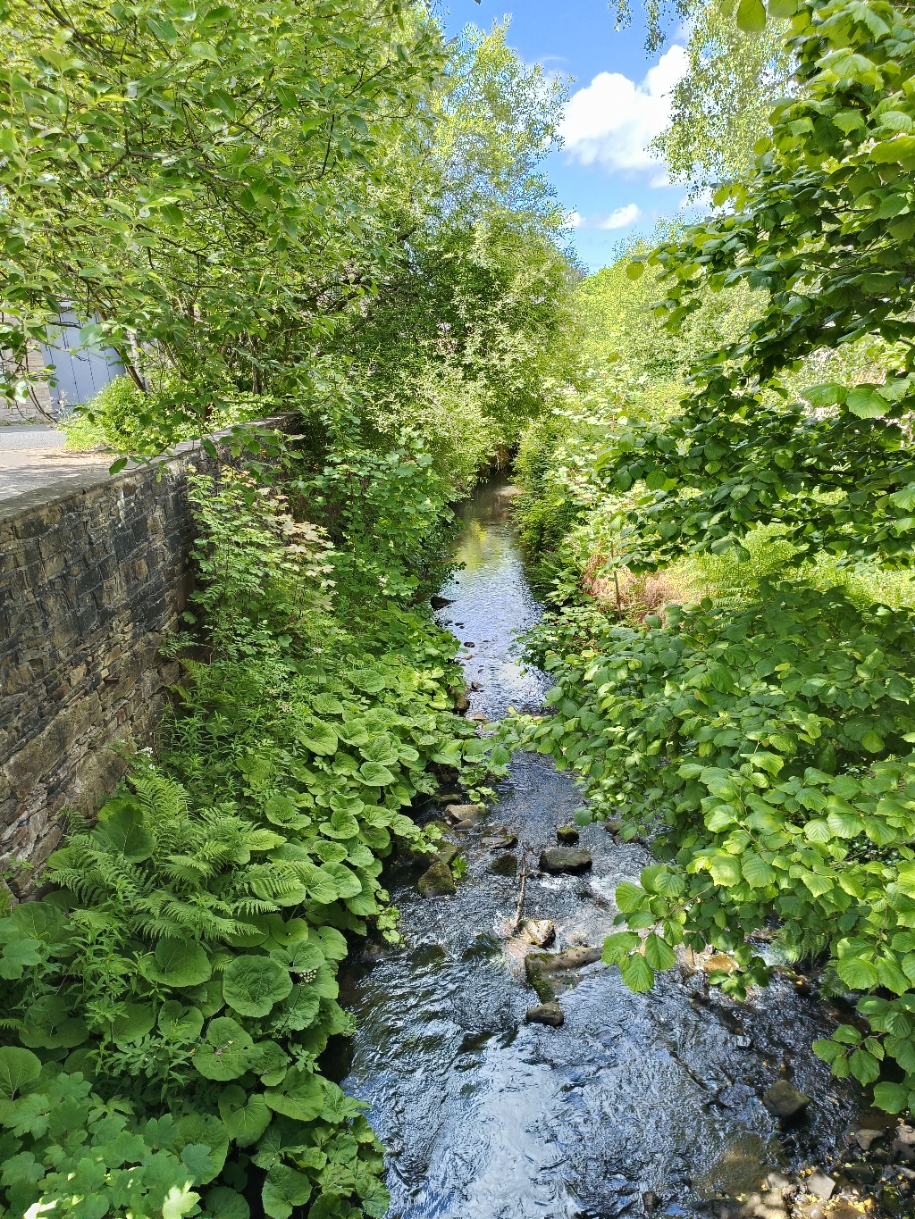
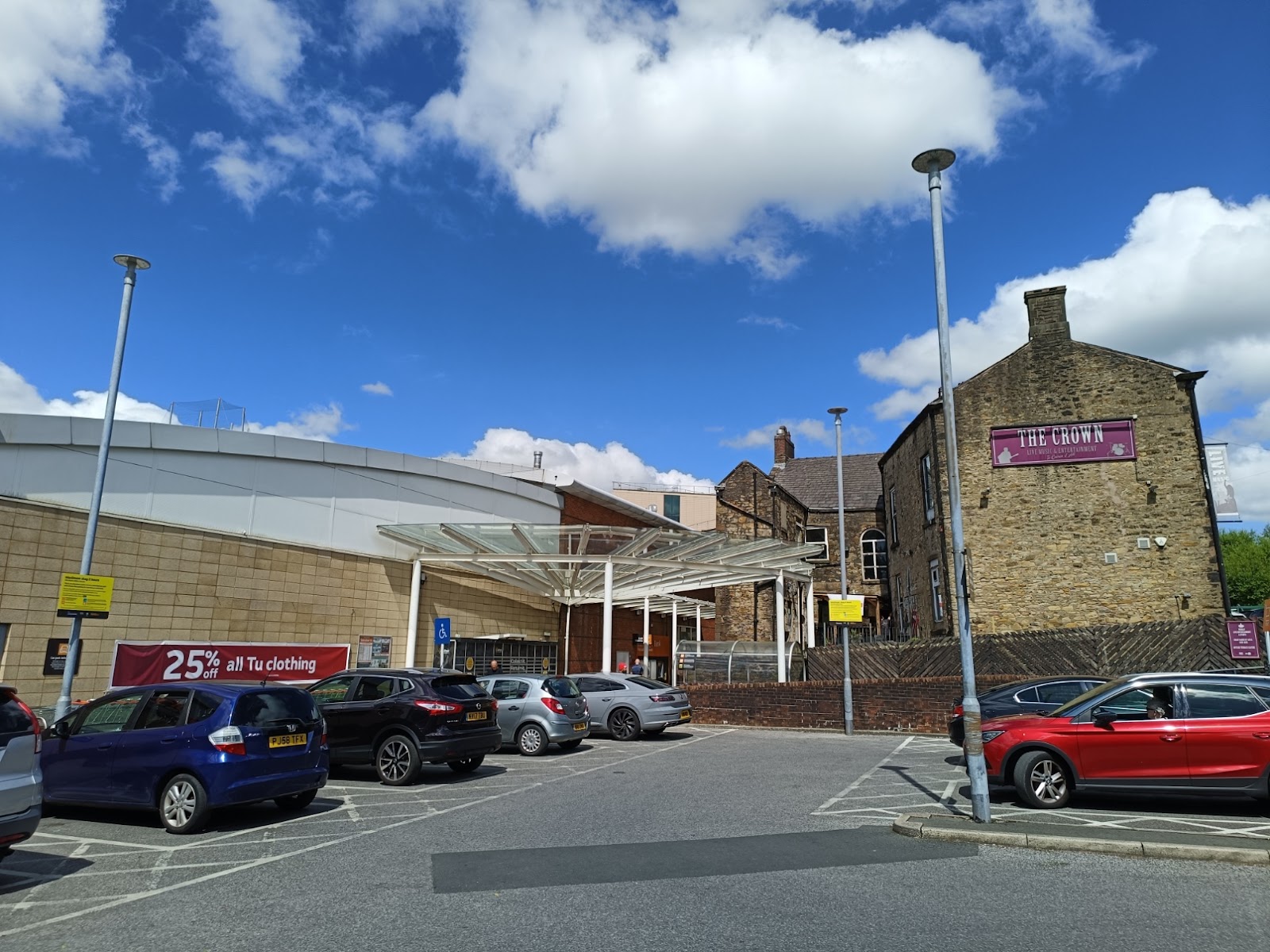

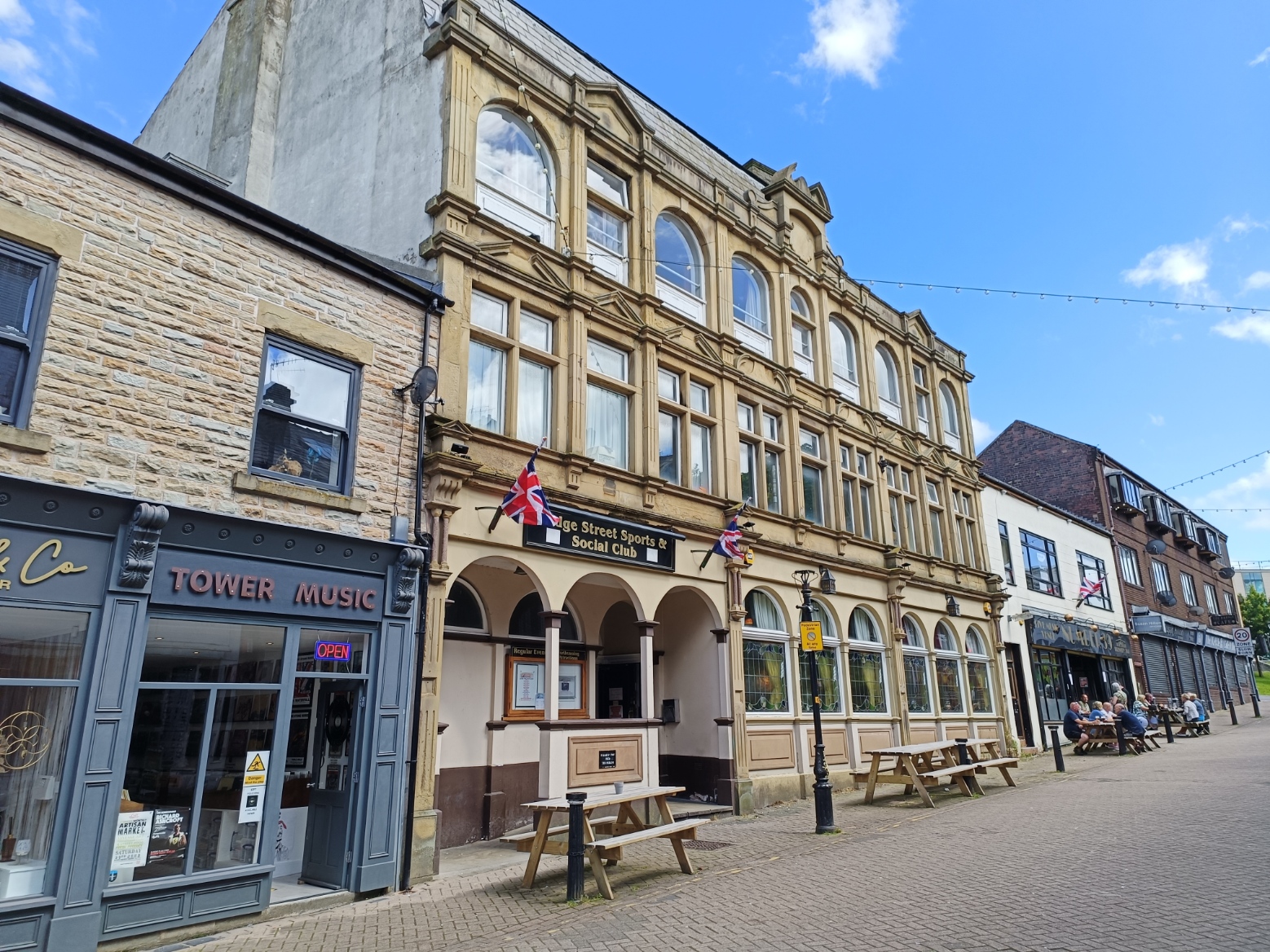


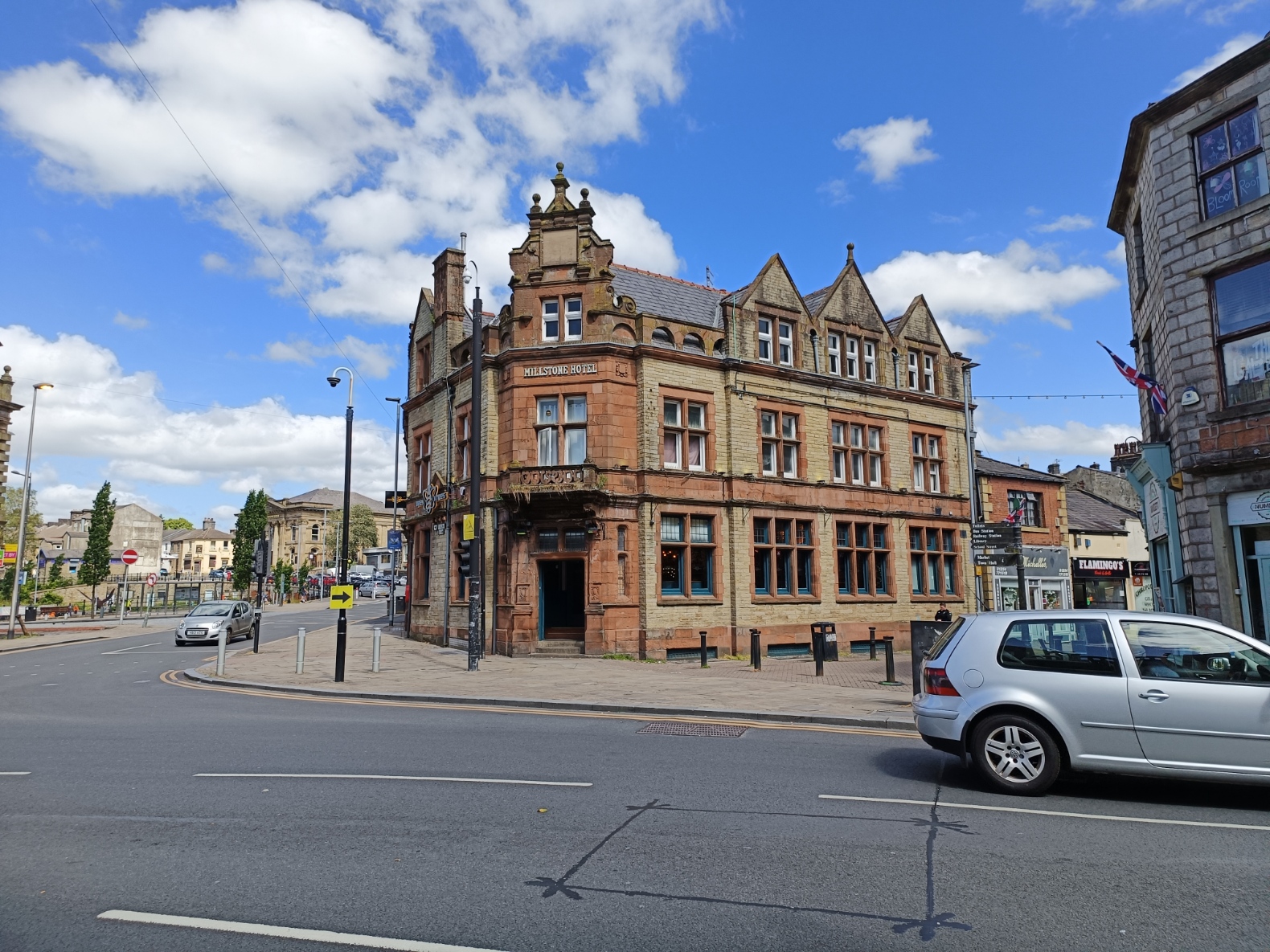


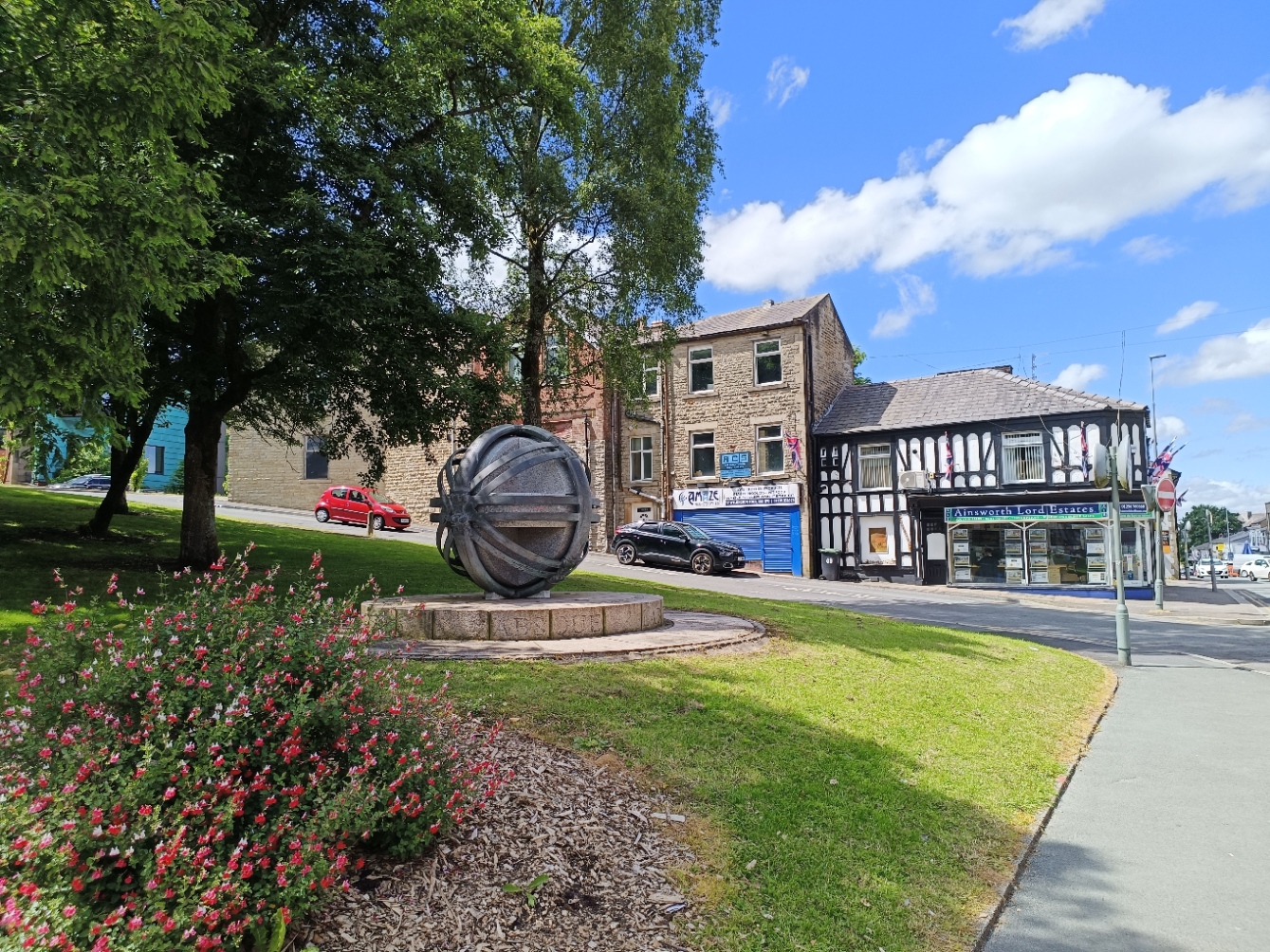





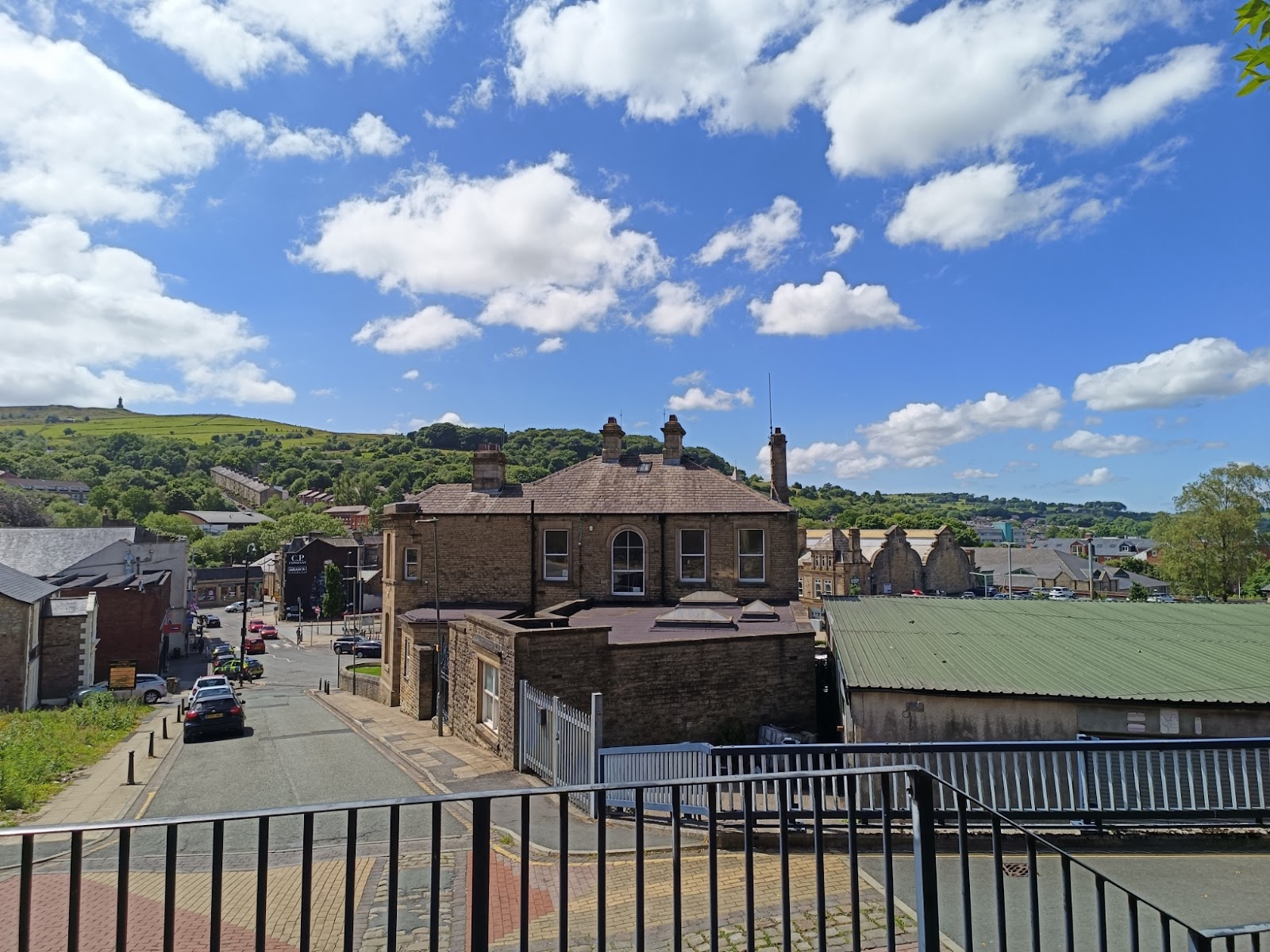
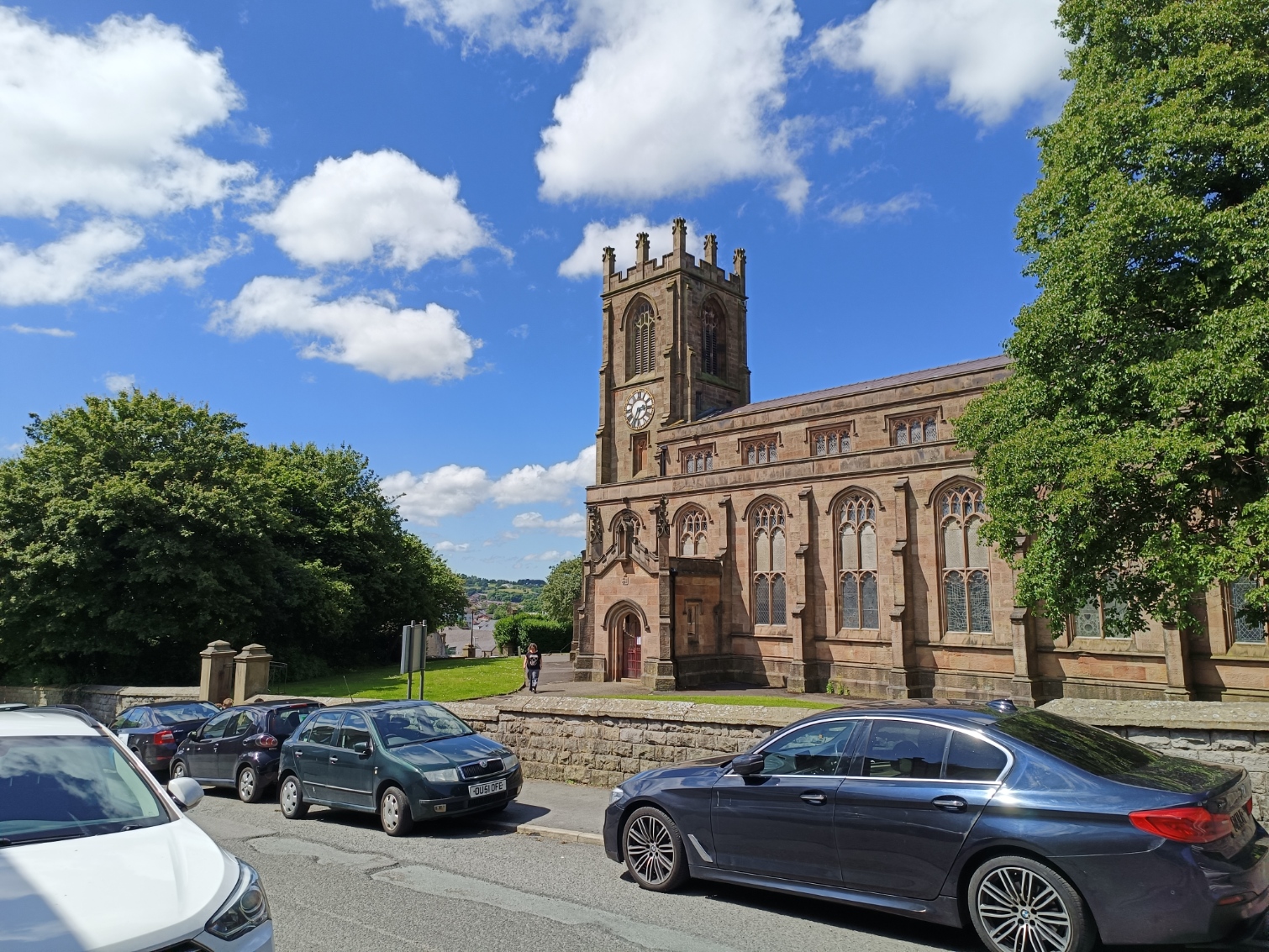







Comments
Post a Comment